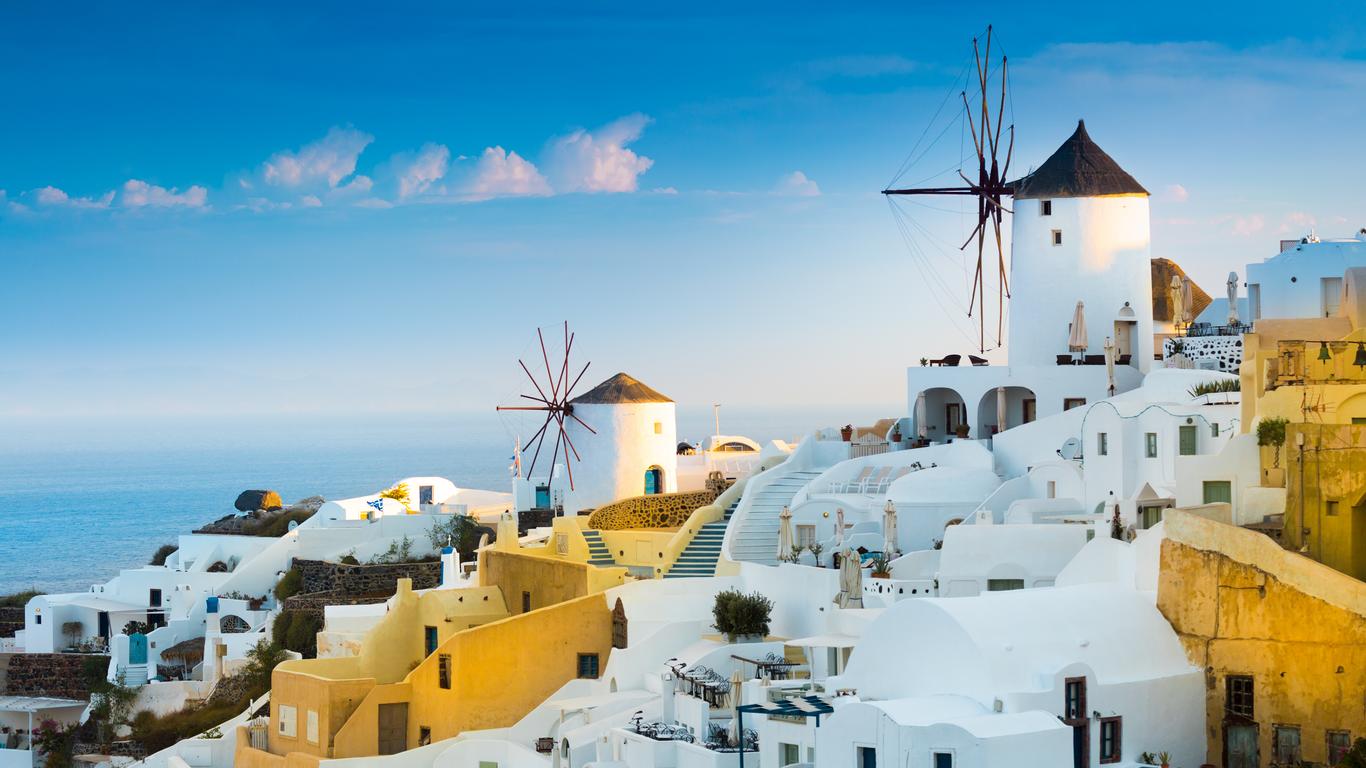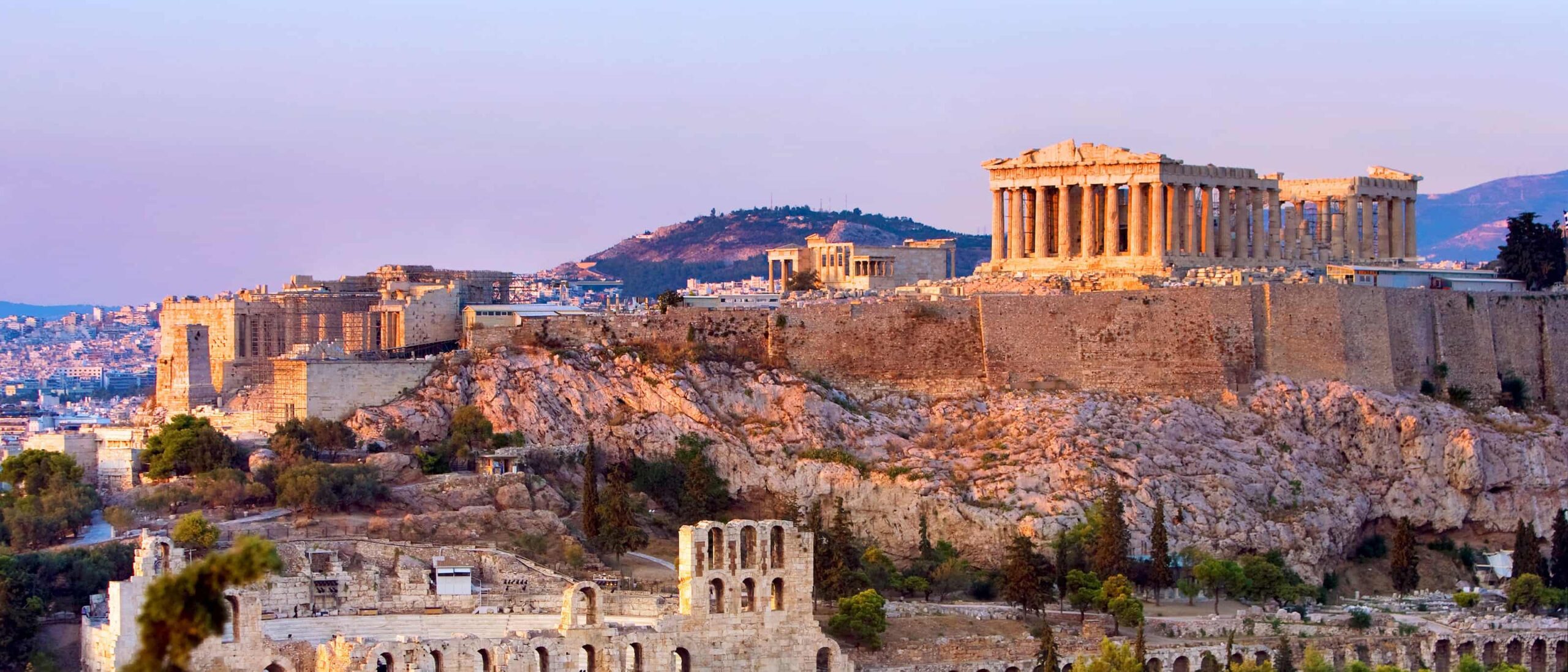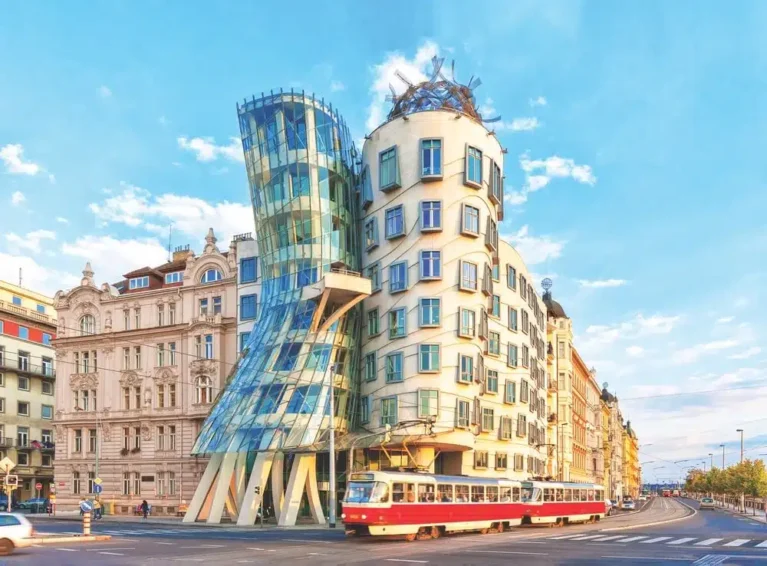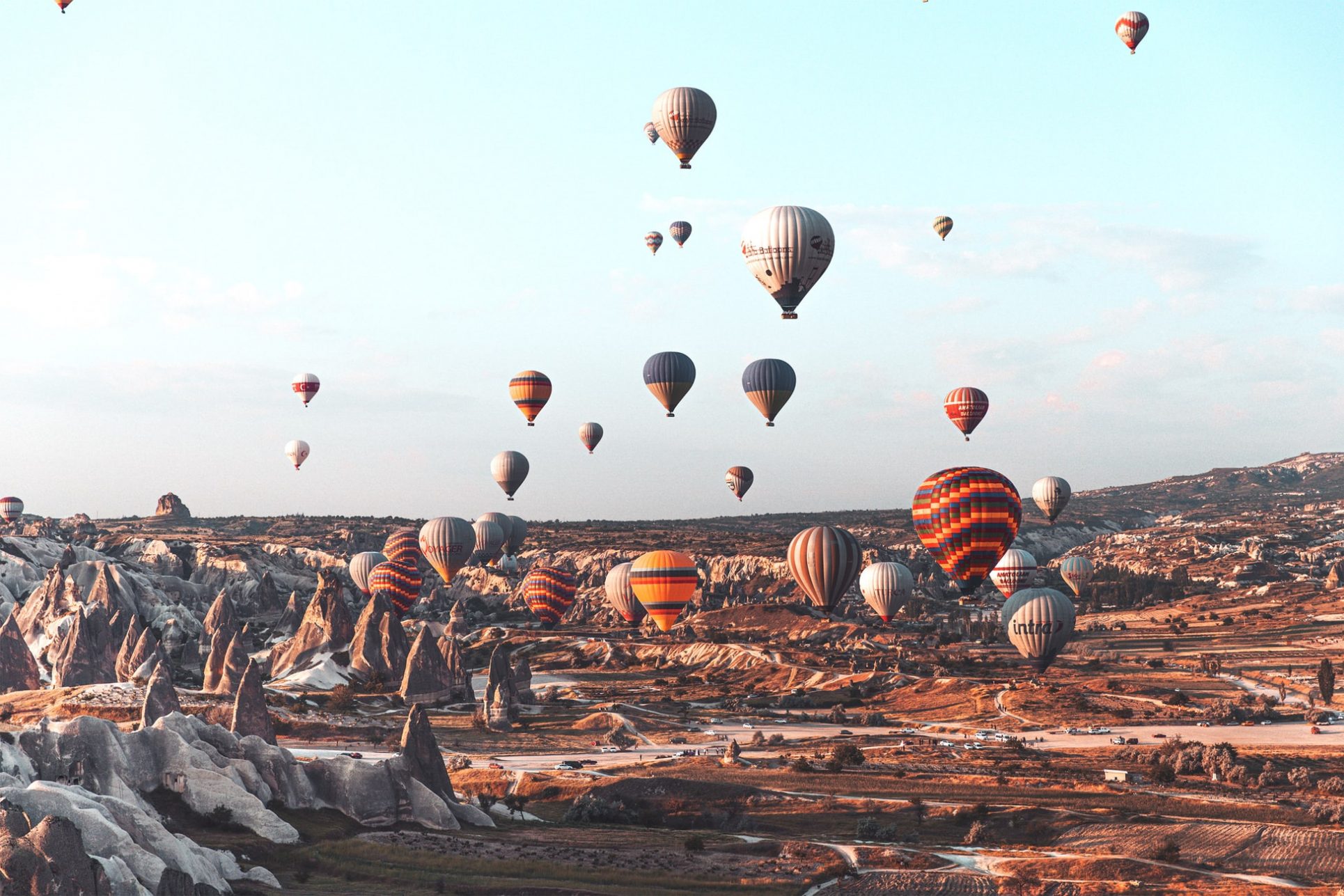Greece
Top Five
-
12 Day Bulgaria, Serbia & Romania Tour
Discover local flavors Learn about traditional tracks Escorted tours High quality accommodation
-
12 Day Classic Romania
Discover local flavors Learn about traditional tracks Escorted tours High quality accommodation
-
12 Day Albania, Montenegro, Croatia & Slovenia
Discover local flavors Learn about traditional tracks Escorted tours High quality accommodation
-
13 Day Turkish Treasures with Cappadocia
Discover local flavors Learn about traditional tracks Escorted tours High quality accommodation
-
12 Day Central Europe with Warsaw & Krakow
Discover local flavors Learn about traditional tracks Escorted tours High quality accommodation

Greece
A visit to the land of Homer, Aristotle, and Sophocles is a journey to the dawn of classical civilization, with archaeological splendors from Athens to Crete. The towering monasteries of Meteora and soaring Mt. Olympus inspire awe, while relaxing islands like Corfu and Santorini invite simple pleasures and a taste of the good life on the Aegean Sea. The Greek countryside presents the perfect coda with idyllic landscapes of cypress groves, vineyards, and olive trees, as well as dramatic coves with sparkling white sand and rugged mountains that plunge into the sea.
Don’t limit yourself to Central Athens.
Athens is a walkable city, especially the tourist areas around the Acropolis such as Monastiraki and Plaka. But there’s much more to this ancient town than these central spots. Move outside Central Athens and wander through the many dynamic Athens neighborhoods—you’ll discover amazing dining, unique boutiques, and encounter the many local vibes that make this such a vibrant city.
There’s a surprising amount of free things to do in Athens.
Visitors to Athens will naturally want to see the famous sites: the Acropolis and Parthenon; the Acropolis Museum; and the all-marble Panathenaic Stadium, which hosted the opening and closing ceremonies of the first modern Olympics in 1896. But there are plenty of free things to see in Greece’s capital beyond the ancient sites, from street art tours to watching the changing of the evzones guards outside the Greek Parliament. You can meander the streets of the so-called “island village” beneath the Acropolis rock and sit and watch the sunset atop Areopagus–the Hill of Ares just by the Parthenon entrance.
Mykonos
From backpackers to the super-rich, from day-trippers to yachties, from Joe Average to celebrities who head here by helicopter, Mykonos has become one of the most popular of the Aegean islands. Today’s scene is a weird but attractive cocktail of tradition, beauty, and glitz, but travelers from all over the world have long been drawn to this dry, rugged island—at 16 km (10 miles) by 11 km (7 miles), one of the smaller Cyclades—thanks to its many stretches of sandy beach, its thatched windmills, and its picturesque port town. One thing is certain: Mykonos knows how to maintain its attractiveness, how to develop it, and how to sell it. Complain as you will that it is touristy, noisy, and overdeveloped but you will be back.
In the 1950s, a few tourists began trickling into Mykonos on their way to see the ancient marvels on the nearby islet of Delos, the sacred isle. For almost 1,000 years Delos was the religious and political center of the Aegean and host every four years to the Delian games, the region’s greatest festival. The population of Delos actually reached 20,000 at the peak of its commercial period, and throughout antiquity Mykonos, eclipsed by its holy neighbor, depended on this proximity for income (it has been memorably described as Delos’s “bordello”), as it partly does today. Anyone interested in antiquity should plan to spend at least one morning on Delos, which has some of the most striking sights preserved from antiquity, including the beautiful Avenue of the Lions and the startling, enormous stone phalli in the Sanctuary of Dionysus.
Today, the natives of Mykonos have happily welcomed cosmopolitan New Yorkers, Londoners, and Athenians gracefully into their way of life. You may see, for example, an old island woman leading a donkey laden with vegetables through the town’s narrow streets, greeting the suntanned vacationers walking by. The truth is, Mykonians regard a good tourist season the way a fisherman inspects a calm morning’s catch; for many, the money earned in July and August will support them for the rest of the year. Not long ago Mykonians had to rely on what they could scratch out of the island’s arid land for sustenance, and some remember suffering from starvation under Axis occupation during World War II. How things have changed.
Thessaloniki and Central Macedonia
A land shaped by gods, warriors, and ghosts, Northern Greece sparkles with the sights, sounds, scents, and colors of its melting-pot history and epic geography. Here you will find remnants of the powerful civilizations that battled each other: temples and fortifications built by Athens and Sparta, Macedonian tombs, the arches and rotundas of imperial Rome, the domes of Byzantium, and the minarets and hammams of the Ottomans. Today, these sights rank among the most splendid sightseeing delights in Greece.
Burnished by history, the area that is often called Northern Greece borders Albania, the Former Yugoslav Republic of Macedonia (FYROM, also known as Skopje), Bulgaria, and Turkey. From north to south, this land is heritage-rich. “Even today, house-owners sometimes dream that beneath their cellars lie Turkish janissaries and Byzantine necropolises,” wrote historian Mark Mazower in his 2004 book Salonica: City of Ghosts. “One reads stories of hidden Roman catacombs, doomed love-affairs, and the unquiet souls who haunt the decaying villas near the sea.”
Around 316 BC, the Macedonian leader Cassander founded what is now the area’s major city, Thessaloniki, which grew into a culturally rich and politically strategic metropolis where Christians, Muslims, and Jews lived together for hundreds of years. Today it remains the second-largest city in Greece, is an anchor for arts and culture in the Balkans, and also brims with antiquities, old-style street markets, and old-world European flavor. Beyond Thessaloniki lies Central Macedonia, where you can explore ancient monasteries, admire the frescoed tomb of Philip II of Macedon, hike the bloom-filled trails leading to Mount Olympus, commune with farmers over grilled wild mushrooms, and enjoy some of Greece’s finest beaches and seaside resorts.
The region was established as the state of Macedonia in the 8th century BC, and an illustrious monarchy was ensconced by about the 7th century BC. Philip II (382–336 BC) and his son Alexander the Great conquered most of the rest of Greece—except Sparta—and all of Persia. After Alexander’s death, his brother-in-law, Cassander, established Thessaloniki as the capital (316 BC), naming it for his new bride, Thessalonica, Alexander’s half sister and daughter of the much-married Philip. (Philip had named her after his famous nike, or “victory,” in Thessaly, where her mother had been one of the prizes.) The Romans took Macedonia as Alexander’s successors squabbled, and by 146 BC, the rest of Greece had fallen under Roman rule. After the assassination of Julius Caesar, Marc Antony defeated Brutus and Cassius at the battles of Philippi in Macedonia in 42 BC. Under Pax Romana, St. Paul twice traveled through on his way to Corinth.
Greek and Macedonian culture bloomed again during the Byzantine Empire (circa AD 312–1453), when the center of Greek civilization shifted from Athens to Constantinople (modern-day Istanbul). Thessaloniki became the second-most important city in the empire, and it remained so during the Ottoman domination that lasted from the fall of Constantinople until the 1912–13 Balkan Wars. That’s when Macedonia became part of Greece, and the 1923 Treaty of Lausanne established the present borders with Thrace. The collapse of Yugoslavia in the 1990s rekindled ethnic and religious animosities. Today’s northern Greeks are fiercely nationalist, and they strongly oppose the Former Yugoslav Republic of Macedonia’s (FYROM) insistence on calling itself “Macedonia” and using ancient Macedonian symbols such as the star of Vergina on its flag, in an attempt to create a speedy and easily identifiable post-Communist national identity. Tempers flared again in December 2006, when FYROM announced plans to name its international airport in Skopje after Alexander the Great.
Name-game squabbling aside, Northern Greece is flourishing. It’s a hub for southeast European commerce and culture, and is home to Aristotle University, Greece’s largest. The area is also expected to benefit from the Egnatia Odos, a 669-km (416-mile) road project that connected the Greek–Turkish border with the western port of Igoumenitsa. An influx of immigrants, many of them from Eastern Europe and the Middle East, is once again giving a multicultural flavor to Thessaloniki.









